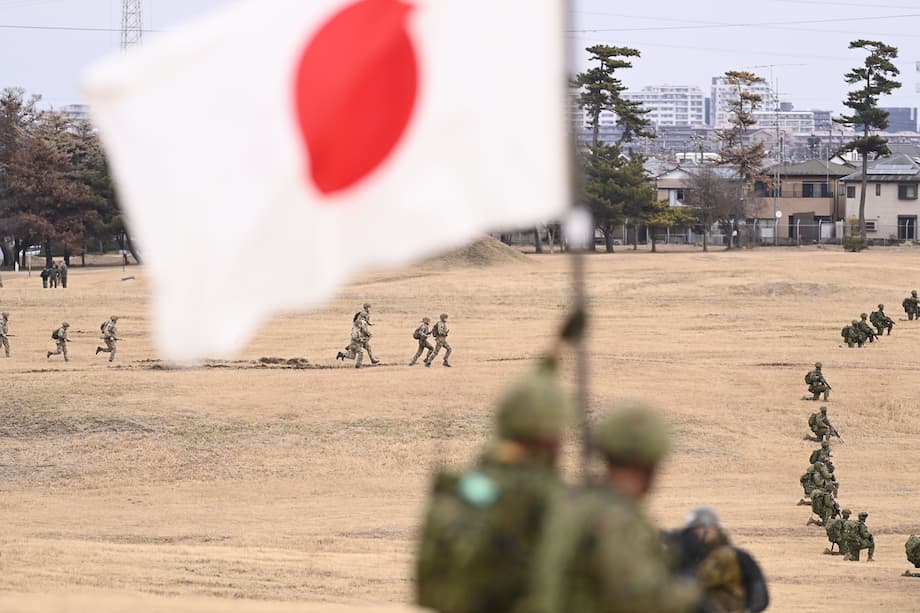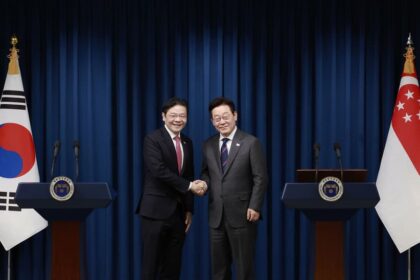Why these drills matter now
The United States and Japan have opened a two week military exercise that places some of Washington’s newest land based missiles on Japanese soil, a move that Beijing has condemned as a threat to regional security. The annual Resolute Dragon drills feature the US Army’s Typhon system, which can fire Tomahawk cruise missiles and the Standard Missile 6, alongside the Marine Corps’ ship killing NMESIS launchers and Japan’s extended range Type 12 surface to surface missiles. The training began shortly after US Defense Secretary Pete Hegseth held a video call with Chinese Defense Minister Admiral Dong Jun, the first known direct conversation between the two since the spring. The timing underscores a mix of deterrence and dialogue as the region digests a recent Chinese military parade showcasing new missiles and large naval drills around Taiwan.
- Why these drills matter now
- What missiles will be used and what they do
- Where the systems are positioned
- Beijing and Moscow push back
- Signals from Washington and Beijing
- How this fits Japan’s changing defense posture
- What this means for Taiwan and regional security
- Risks, logistics, and what to watch next
- At a Glance
US officials describe the mix of missiles as a layered coastal defense that can protect vital sea lanes, defend key terrain, and project power from shore if needed. Japan is hosting the largest Resolute Dragon to date, with about 5,200 US personnel training alongside roughly 14,000 members of the Japan Self Defense Forces across multiple locations. The exercise runs from September 11 to 25 and includes command post drills as well as field events that practice rapid deployment, sensor to shooter targeting, and joint operations across islands in Japan’s southwest chain near Taiwan.
China has warned for weeks against bringing the Typhon system into Asia, and Russia has joined in the criticism. Washington and Tokyo say the drills are about readiness and interoperability, not escalation. The allies have stressed that they seek stability and crisis management even as they build up resilience against growing military pressure in the Western Pacific.
A fresh test of deterrence and diplomacy
The phone call between Hegseth and Dong Jun set a deliberate tone. According to the Pentagon’s chief spokesperson Sean Parnell, Hegseth told his counterpart that the United States does not want conflict with China and is not pursuing regime change or strangulation of China. He also reiterated that US interests in the Asia Pacific are vital and will be protected. China’s readout said Dong urged Washington to respect China’s core interests and raised concerns over Taiwan and the South China Sea. The same week, US Secretary of State Marco Rubio spoke by phone with Chinese Foreign Minister Wang Yi, and preparations continued for a possible autumn meeting between Xi Jinping and Donald Trump during Asia Pacific Economic Cooperation events in South Korea. A bipartisan US House delegation is planning to visit China as well, the first such trip in more than six years.
What missiles will be used and what they do
Typhon, also known as the Mid Range Capability, is a truck based launcher that fires two families of weapons. One is the Standard Missile 6, a versatile interceptor credited with the ability to contribute to ballistic missile defense, defend against aircraft, and strike ships at sea. Its range is estimated at roughly 370 kilometers, or about 230 miles, depending on the mission profile. The other is the Tomahawk, a cruise missile that flies low and can maneuver to strike targets around 1,600 kilometers away, close to 1,000 miles. The Center for Strategic and International Studies notes that pairing these weapons with mobile land launchers creates new options against fleets operating inside the first island chain while also holding shore targets at risk from a distance.
NMESIS, short for Navy Marine Expeditionary Ship Interdiction System, gives the Marine Corps a land based, mobile anti ship punch. It mounts Naval Strike Missiles on an unmanned launcher built on a light tactical vehicle. The missile is sea skimming and hard to detect. Its range is about 115 miles, giving coastal units the ability to threaten surface ships from concealed positions and then scoot to avoid counterfire. During training in Japan this month, Marines rehearsed finding ships, passing target data, and coordinating simulated strikes with Japanese units.
Japan’s upgraded Type 12 surface to surface missile stretches Tokyo’s ground based reach. Open sources and defense institutes assess its range at up to 900 kilometers, roughly 560 miles, after modernization. The system is part of Japan’s plan to build a counterstrike capability backed by domestic production and allied tech. Resolute Dragon also brings in the Marine Corps’ air defense system called MADIS, designed to defeat drones and low flying aircraft, and features High Mobility Artillery Rocket System training at Yausubetsu Maneuver Area in Hokkaido. Japanese rocket artillery will participate in that northern segment, though officials say no live fire will take place on the more populated islands in the southwest.
How Typhon extends land based reach
Typhon exists because the United States left the Intermediate Range Nuclear Forces Treaty in 2019, citing Russian violations. That treaty barred ground launched ballistic and cruise missiles with ranges between 500 and 5,500 kilometers. After the withdrawal, the Army developed Typhon to put long reach precision strike missiles on the ground, not just at sea or in the air. The system has already appeared in the Philippines for exercises and, in July, fired an SM 6 during Australia’s Talisman Sabre, striking a maritime target west of the international date line. Those events previewed what the Army’s 3rd Multi Domain Task Force now brings to Japan for Resolute Dragon.
Where the systems are positioned
The US Army says Typhon will be stationed at Marine Corps Air Station Iwakuni on Honshu for the exercise. Japanese and US releases indicate the broader training area includes the Southwest Islands that arc toward Taiwan. That chain tightens the geography of any crisis. It includes Ishigaki, about 150 miles east of Taiwan, and Yonaguni, only 67 miles from Taiwan’s coast. The Marine Corps says parts of the exercise rehearse remote island operations and bilateral crisis response. Japanese defense documents posted locally state that training on Ishigaki will be without live fire.
For the first time on Ishigaki, the Marine Corps is bringing NMESIS and MADIS. The placement demonstrates a concept that US Marines and Japanese units have been refining since 2024. Small, mobile missile teams disperse across islands, cue sensors to locate ships, shoot if necessary, then relocate before an adversary can target them. That posture creates denial zones that complicate any large naval movement through narrow straits and choke points.
Further north, artillery units will train at Yausubetsu in Hokkaido from September 14 to 24, with US HIMARS joining Japanese rocket systems. Beyond Resolute Dragon, the allies are tightening other parts of the air and missile defense network. Resilient Shield, a US Japan ballistic missile defense drill held in early 2025, focused on integrating air defense units and destroyers in complex computer based scenarios. The idea is to build habits and common procedures before a crisis arrives.
Beijing and Moscow push back
China’s Foreign Ministry has condemned the Typhon deployment since it was announced. State media and official briefings have framed the system as a direct threat to strategic stability and a danger to the security of neighboring states. Chinese officials have urged Washington and Tokyo to reconsider and have repeatedly told Japan to act with prudence in military affairs, invoking appeals to history and regional trust.
Chinese Foreign Ministry spokesperson Guo Jiakun warned that Tokyo and Washington should respect the security concerns of other countries. He has insisted that Typhon should not be brought into Asian countries at all. Introducing the ministry’s position, Guo said the deployment would damage legitimate security interests of others. He emphasized the call for restraint. In his words:
“The US and Japan should respect other countries security concerns and must not bring in the Typhon intermediate range missile system.”
Russia has voiced its own objections. The Foreign Ministry’s Maria Zakharova called the decision to host Typhon during the drills destabilizing and warned that Russia would consider responses if deployments occur near its territory. After outlining Moscow’s view that US ground based missile capabilities are expanding in Asia, she delivered a blunt warning. As Zakharova put it:
“This is another destabilizing step… Deploying Typhon missiles in regions near Russia poses a direct strategic threat to Russia.”
Typhon is not a ballistic missile and it does not change treaty obligations, yet it still triggers concern in Beijing and Moscow because it closes geographic gaps. From coastal Japan, Tomahawks can reach inland targets in much of eastern China. SM 6 adds a flexible tool for sea control and air defense. Combined with Japanese Type 12 units and Navy and Air Self Defense Force platforms, that creates an overlapping web that can complicate any rapid move by the People’s Liberation Army in nearby seas.
Signals from Washington and Beijing
The Hegseth Dong call paired with the start of Resolute Dragon shows that military activity and high level communication can run in parallel. After the call, Pentagon spokesperson Sean Parnell summarized the US position on China. He said the United States does not seek conflict with China and is not pursuing regime change or strangulation of China. He added that the United States has vital interests in the Asia Pacific and will protect them.
China’s readout said Dong raised Taiwan and the South China Sea and urged the United States to respect China’s core interests. Separate diplomacy is also active. US Secretary of State Marco Rubio and Foreign Minister Wang Yi spoke by phone the same day, and the two sides are working toward possible head of state diplomacy in late October on the sidelines of Asia Pacific Economic Cooperation events in South Korea. There are legislative contacts too, with a bipartisan group of US House members preparing to visit China, a rare step after years of limited congressional travel.
US military commanders frame Resolute Dragon as a deterrent signal and a readiness drill. III Marine Expeditionary Force commander Lieutenant General Roger Turner said the exercise is critical for sharpening allied capabilities alongside Japan’s Western Army. Introducing his message of deterrence, Turner said:
“By training alongside the Western Army in realistic, combat focused scenarios, we sharpen the warfighting edge of our forces and present a clear, credible deterrent to any adversary who would threaten peace and security in the Indo Pacific.”
A Marine Corps spokesman, 2nd Lieutenant James Selcke, added that scale is part of the message. He wrote in an email that the exercises are expanding and drawing joint and allied interest. As Selcke said:
“The drills growing scale reflects the importance of this exercise and the desire of joint and allied forces to join in the opportunity to enhance our readiness.”
How this fits Japan’s changing defense posture
Tokyo has been revising its defense planning since 2022, when it adopted a new National Security Strategy that endorsed a counterstrike capability. That decision paved the way for buying Tomahawks for Japan’s navy, upgrading the Type 12 missile, and investing in joint targeting networks. The government also set a goal to raise defense spending near 2 percent of GDP by the latter half of the decade. The policy shift does not abandon Japan’s focus on self defense, but it acknowledges that long range fires and distributed operations are now central to deterring an opponent with growing missile and naval power.
Japan had been cautious about hosting US land based missiles even for training. That position is evolving. The temporary presence of Typhon at Iwakuni for Resolute Dragon, and the arrival of NMESIS and MADIS on Ishigaki, signal a willingness to conduct realistic rehearsals on key islands. Local concerns remain, especially in Okinawa Prefecture, so planners stress that training near populated areas avoids live fire. The Hokkaido segment that includes HIMARS and Japanese rocket systems is held at an established maneuver range far from dense civilian areas. The message from Tokyo is that readiness can grow while risk to communities is managed.
The first island chain and sea lanes
China often refers to the first island chain, a line of archipelagos that runs from Japan through Taiwan and the Philippines toward Borneo. Those islands sit astride major sea lanes. In a crisis, mobile missile units spread across these islands can form overlapping denial zones that constrain naval movement. Japan’s Southwest Islands are central to this geometry. Small detachments on Yonaguni, Ishigaki, and other islands can cover the Miyako Strait and waters north of Taiwan, while allied forces in the Philippines can watch the Bashi Channel to the south. Access through those gaps is vital for any large fleet sortie into the wider Pacific.
What this means for Taiwan and regional security
Recent exercises have modeled how a Taiwan contingency might unfold. According to reporting cited by Newsweek, a command and control drill called Keen Edge last year included scenarios in which US and Japanese forces coordinated missile and air strikes on a Chinese invasion fleet heading for Taiwan, while also responding to attacks on Japanese bases. The same report said one scenario looked at a Chinese assault on Yonaguni, Japan’s westernmost island, which sits close to Taiwan. Chinese carrier operations near the island in 2024 and 2025, including the Shandong’s sorties, sharpened Tokyo’s focus on air and missile coverage for its outer islands.
Beyond Resolute Dragon, planning has advanced on deploying additional US and Japanese missiles along the Nansei chain in a crisis. Reporting by VOA described a joint concept to station High Mobility Artillery Rocket Systems and other weapons on islands that stretch from Kyushu toward Taiwan. The concept envisages US Marine units using temporary sites with Japanese logistical support. A similar approach is playing out with the Philippines, where access agreements and exercises have created options to base long range fires in Batanes and Luzon if deterrence fails. The idea is to prevent a rapid fait accompli by threatening landing ships and reinforcing the ability to keep sea lanes open.
Chinese activity far from home waters also shapes allied planning. In February, Australia and New Zealand monitored a Chinese navy task group operating inside Australia’s exclusive economic zone near Tasmania. At the same time, the United States and Japan ran Resilient Shield, a ballistic missile defense drill that links ships and air defense units in a common training picture. These events show that both sides are expanding the scope of operations. The Pacific is crowded with more sensors, more missiles, and tighter timelines, which increases the value of disciplined procedures and reliable communication channels.
Risks, logistics, and what to watch next
Missile dispersal across islands is tactically powerful but logistically complex. Units need fuel, spare parts, and resilient communications to survive inside an adversary’s striking range. The Marine Corps has published concepts that emphasize mobility, deception, and quick repositioning. Training in Japan this month focuses on passing target data from sensors to shooters and on moving concealed launchers between positions. Reports from earlier events in Okinawa described the first full field integration of NMESIS on Japanese soil, a step that validates basic tactics and messaging between allies.
Washington and Tokyo know that miscalculation is the greatest risk. To manage that risk, both sides have reopened defense hotlines and expanded senior level contact even as they exercise. Chinese leaders say they oppose deployments like Typhon and view them as provocative. US and Japanese officials say these drills are routine and defensive. Clear communication reduces the chance that a training movement will be misread as a prelude to combat.
The next milestones are practical. The Marine Corps expects to field more NMESIS batteries through 2025 and beyond and to embed the 12th Marine Littoral Regiment in Okinawa as a hub for distributed operations. Japan will continue fielding longer range Type 12 units and work toward integrating targeting networks across services. The US Army’s 3rd Multi Domain Task Force will keep experimenting with Typhon’s best employment, including pairing it with allied sensors. In parallel, diplomacy will move on multiple tracks, from possible head of state meetings to working level exchanges.
At a Glance
- Resolute Dragon runs from September 11 to 25 across Japan, with about 5,200 US personnel and roughly 14,000 from Japan participating.
- The US Army’s Typhon launcher is in Japan for the drills, firing SM 6 and Tomahawk missiles with ranges up to 1,600 kilometers.
- The Marine Corps brought NMESIS and MADIS to Ishigaki for the first time, with training there conducted without live fire.
- Japan’s upgraded Type 12 ground missile is assessed at up to 900 kilometers in range, expanding its counterstrike reach.
- HIMARS and Japanese rocket systems will train at Yausubetsu Maneuver Area in Hokkaido from September 14 to 24.
- Beijing and Moscow condemned Typhon’s presence in Japan, calling it destabilizing and a direct strategic threat.
- US and Chinese defense chiefs spoke by video ahead of the drills, and diplomats are preparing for possible Xi Trump talks at APEC in October.
- Recent allied training has modeled missile strikes on a Chinese invasion fleet targeting Taiwan, according to open source reporting.
- Resilient Shield and other exercises are knitting together US Japan air and missile defense units for faster joint response.
- Allies are refining island dispersal, mobility, and sensor to shooter links to create denial zones along the first island chain.












